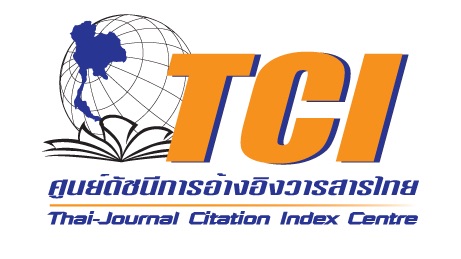The Culture of Fear: Ghost, Knowledge and Recognition in Thai Ghost Films
Keywords:
cultural of fear, ghost, construction, recognition, Thai ghost filmAbstract
This article aims to study the culture of fear, with a central focus on the fear of ghosts, in the two selected Thai films, NangNak (1999) and Baan Phee Pob: Reformation (2011). The study was conducted with the Sara Ahmed’s main concept of the cultural politics of emotion and cultural histories and memories. The selected of 2 movies have shown that fear of ghosts is relational, the characters can shift between fear and fearlessness by re-apprehending. Due to the ghosts have difference style to haunt people relate on their behavior. Furthermore, some groups of people can use fear to establish their power and eliminate the sources of fear. Therefore, fear of ghosts is shaped by cultural and historical construction which involves the apprehension of circulated knowledge of the ghosts in society.
References
กชกร โพธิหล้า. (2555). การศึกษาวิเคราะห์อิทธิพลความเชื่อเรื่องผีปอบที่มีความสัมพันธ์กับพิธีกรรมทางพุทธศาสนา: กรณีศึกษา บ้านดอนยานาง จังหวัดกาฬสินธุ์ [วิทยานิพนธ์ปริญญาพุทธศาสตรมหาบัณฑิต]. มหาวิทยาลัยมหาจุฬาลงกรณราชวิทยาลัย.
กมเลศ โพธิกนิษฐ. (2555). การทำให้เป็น ผีปอบ และการกีดกันทางสังคมในมุมมอง. วารสารสถาบันพระปกเกล้า, 10(2), 121-143.
กัญญา วัฒนกุล. (2560, 11 มกราคม). ปอบ: งมงายหรือเรื่องจริง?. https://www.youtube.com/watch?v=zZ4IvkWyhFE
ชนกพร ชูติกมลธรรม. (2560). “ภาพสยดสยอง : ความอุจจารและบทบาทที่ซับซ้อนในเชิงศีลธรรม ในสังคมไทย” ใน เปิดโลกสุนทรีย์ในวิถีมนุษยศาสตร์ เล่ม 2.มหาวิทยาลัยศรีนครินทรวิโรฒ.
ชัชพล ทรงสุนทรวงศ์. (2548). หนังผีไทยกับภาพสะท้อนทางสังคมและสิ่งแวดล้อม. วารสารอักษรศาสตร์, 34(2), 140-166.
ธนัท อนุรักษ์. (2555). มโนทัศน์และการสร้างความกลัวในสื่อบันเทิงคดีสยองขวัญไทย[วิทยานิพนธ์นิเทศศาสตรมหาบัณฑิต]. จุฬาลงกรณ์มหาวิทยาลัย.
นิธิ เอียวศรีวงศ์. (2541). ยุคสมัยไม่เชื่ออย่าลบหลู่. แพรว.
นิธิ เอียวศรีวงศ์. (2557). โขน คาราบาว น้ำเน่าและหนังไทย : ว่าด้วยเพลง ภาษา และนานามหรสพ (พิมพ์ครั้งที่ 2). มติชน.
มาลา คำจันทร์. (2559). เล่าเรื่องผีล้านนา (พิมพ์ครั้งที่ 3). เคล็ดไทย.
จิธิวดี วิไลลอย. (2559). การประกอบสร้างความหมายผีในละครโทรทัศน์ไทย. นิเทศศาสตรปริทัศน์, 20(1), 20-34.
เสฐียรโกเศศ. (2515). เมืองสวรรค์ และผีสาง เทวดา. บรรณาคาร.
อานันท์ กาญจนพันธุ์. (2555). เจ้าที่และผีปู่ย่า: พลวัตของความรู้ชาวบ้าน อำนาจและตัวตนของคนท้องถิ่น. มหาวิทยาลัยเชียงใหม่.
อาสา คำภา. (2557). ปู่แสะย่าแสะกับประเพณีเลี้ยงผีเมืองเชียงใหม่. วารสารเทคโนโลยีสุรนารี, 6(2), 99-122.
อัญชลี ชัยวรพร. (2559). ภาพยนตร์ในชีวิตไทย มุมมองของภาพยนตร์ศึกษา. ภาพพิมพ์.
Frank Furedi. (1997). Culture of Fear: Risk-Taking and the Morality of Low Expectation. Cassell.
Brian Morris. (2006). Religion and Anthropology: A Critical Introduction.Cambridge University Press.
Eman Mosharafa. (2015). All you Need to Know About The Cultivation TheoryIn Global”, Journal of HUMAN-SOCIAL SCIENCE: A Arts & Humanities –Psychology, 15(8), 22-37.
Frantz Fanon. (1986). Black Skin, White Masks, trans. C. L. Markmann. Pluto Press.
Nationalgeographic. (2015). The Science of Fear. http://www.nationalgeographic.com.au/brain/the-science-of-fear.aspx
Sara Ahmed. (2014). The Cultural Politics of Emotion (2nd ed.). Edinburgh University Press.
Downloads
Published
How to Cite
Issue
Section
License

This work is licensed under a Creative Commons Attribution-NonCommercial-NoDerivatives 4.0 International License.







